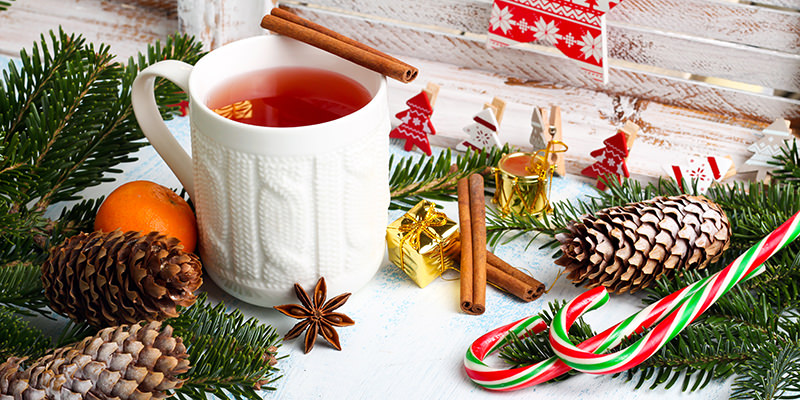It’s that time of year, when we all begin asking ourselves “just what in the living hell is Wassail?” The story of wassail is the story of some old school superstition and moonlit cider cheerleading. Really. Apparently the pagan English knew how to celebrate apple harvest in style. The custom of “wassailing” basically involved drinking a delightful seasonal potable made of mulled wine—plus a bunch of other stuff, but we’ll get to that. In Southern English counties—where cider production was important—they would sing and drink wassail on Twelfth Night (which today is often celebrated the 6th of January, though sometimes the 17th). The most ancient idea of wassailing was to encourage a good apple harvest the following year. And, because it was some pagan stuff, ward away evil spirits.
In some celebrations, there were kings and queens of the wassail, who’d lead the wassailing crew from orchard to orchard, singing traditional songs and—inevitably—putting some wassail-soaked bread into the tree. Typically, this was the work of the wassail queen, though the town might also elect the youngest boy in the village (nicknamed, for some reason, “Tom Tit”) to perform the booze-soaked toast-hanging duties. The basic idea was to inspire the tree to produce good apples again.
Not that “wassailing” was entirely about encouraging orchards to produce. A general sense of well-wishing was built into the tradition. The term “wassail” actually comes from Old Norse phrase “ves heil,” or Olde English “was hal,” meaning “be you healthy.” And Wassail was often served—and consumed—in one massive Wassail Bowl, or “Loving Cup.” Englishman Peter Parley wrote of wassailing in 1856: “The Old Wassail was a bowl of good ale, with apples and spice, and they used to sing: Wassail, Wassail, all over the town! Our toast is white and our ale is brown; Our bowl is made of the maplen tree; We be all good fellows and drink to thee.” Parley doesn’t leave it all at levity. Though “the warmth of the spice and the glow of the ale was to testify to the warmth of the heart and the glow of the soul,” the Wassail Bowl was also meant to be a “Loving Cup of succor for the bereaved and afflicted—a cup of comfort for those that are comfortless.”
As for what’s in that Loving Cup? It’s morphed over the centuries—and has culturally co-mingled with a similar Elizabethan drink called Lamb’s Wool—but a very doable recipe from Alton Brown, who prides himself on at least the spirit of authenticity if not always capable of exact replication, includes baked apples, ale, Madeira, brown sugar, spices, and eggs. (Is any holiday drink complete without eggs?)

